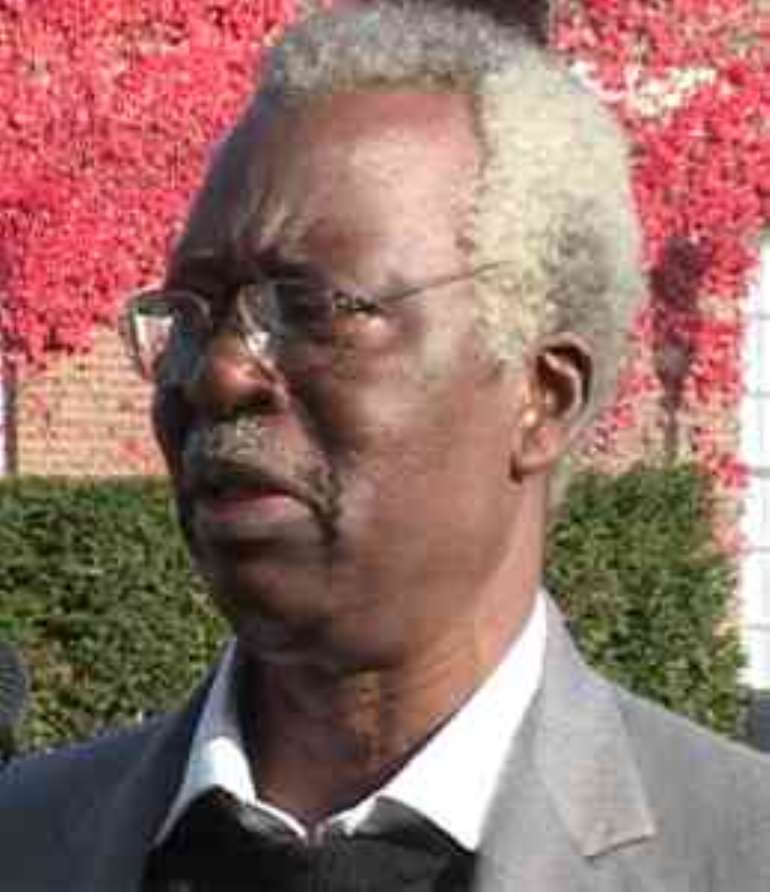DAY ONOBRAKPEYA STEPPED INTO GRILLO PAVILLION'S HALL OF FAME

Seeing an elephant walking in its majestic size, it is understandable if an observer doubts if the forest can ever produce another animal of its majestic aura. Such was a question that trailed the achievements of seasoned artist, Dr. Bruce Onobrakpeya, on Saturday, when artists, collectors and enthusiasts celebrated him in Ikorodu, Lagos State.
Organised by popular businessman and collector, Chief Rasheed Gbadamosi, at the Yusuf Grillo Pavillon located in his vividly green grass-carpeted and art works-dotted expansive compound, the programme was a befitting tribute to the artist who started out as a teacher.
Coming in three parts, it featured a lecture delivered by US-based Prof. Dele Jegede; an exhibition of Onobrakpeya's works; and a no-hold-barred dialogue tagged, Stampede, anchored by Committee for Relevant Art's co-founder, Toyin Akinoso.
At the lecture and stampede, words flowed freely on Onobrakpeya's essence. But for an artist, works speak better. An array of his cross-generation paintings, sculptures and installations on display were a testimony to his prowess. Among such is a painting titled Embracing Friendship and not Guns, which, many will agree, speaks to Nigeria in it present log-jam posture. It presents a multitude of people from whose hands ooze guns and other lethal objects.
But if that and Wailing Mother have themes of fear of tragedy embedded in them, Onobrakpeya returns to his diverse and multi-media self in Hail the Moon (an embossed copper etching), Gate to the Cattle Ranch (of the same medium) Horns of Freedom (for Wole Soyinka), Man and Two Wives, Dance and other works on exhibition.
In his lecture, Jegede situated Onobrakpeya within a cultural and artistic axis where the centrality of art to national pride is amplified. He investigated how the artist emerged not just in practice but also in scholarship based on his scholastic interventions over the years. Jegede described him as a relentless artist devoted to mapping new creative frontiers.
In his remarks on Onobrakpeya, Gbadamosi noted that his had been a life of prodigious attainments. 'At 77, his relentlessness is breathtaking, exemplifying a fine example of an endowment of a born artist. Onobrakpeya personifies the undying embers of an eternally productive artist's life, which, at his early life, found refuge with others in the rebellious womb of the first Nigerian art movement, The Zaria Art Society inauguarated in October 1958.'
On the feasibility of the Nigerian art industry being able to produce another giant like Onobrakpeya, a younger but equally accomplished artist, Kolade Osinowo, noted that it was a vain dream gunning for another Bruce.
Kolade said, 'Bruce is Bruce. There can't be another Bruce. What the younger artists need to know is that there is no easy way to getting to the top. Ironically, even Bruce himself is not there yet. He still has some ideas running in his head.'
Another question posed by Akinoso is the relevance of a Ph.D to a visual artist - or the impact it has on his art.
Foremost collector, Prince Yemisi Shyllon, who saluted Onobrakpeya as a globally collected artist and selfless man (refering to the Harmattan Workshop), said the degree would depend on the focus of the individual artist. 'If you are a production man, you don't need a Ph.D to excel. An MFA is okay. I think there is the need for our policy makers to redesign the policy on this basis.'
While a former Head of Department of Creative Art at University of Lagos, Prof. Sheriff Adetoro, put the discussion in perspective by invoking the question of the scholar artist and artist scholar – with the advice that a measure of both should be in a practitioner, scholar-politician, Prof. Pat Utomi, emphasised the need for mentoring and for an artist to be given strategic and consistent exposure.
He added, 'A degree does not mean you are a better artist than others. It is the passion you bring in and the seriousness you put in that matter.'
Yet, for those who were struggling to know what really made Onobrakpeya, an answer came from Grillo, who identified the celebrant's inventiveness as his greatest strength.
Also present at the lecture were stakeholders such as another top collector, Mr. Sammy Olagbaju, Ambassador Segun Olusola, Chief Frank Okonta, Mrs. Bolanle Austen-Peters, Erelu Abiola Dosumu, Prof. Dele Layiwola and his wife, Peju, and Emmanuel Silva.
